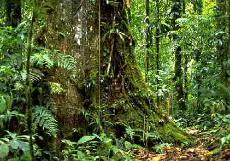Scientists say that mass extinction is currently underway. This is the largest loss in biodiversity since the extinction of the dinosaurs 65 million years ago. The U.N. Convention on Biological Diversity published a report which estimates that the current rate of extinction is 1,000 times faster than historic rates.
Human activity is destroying biodiversity at unprecedented rates. Habitat loss is the major problem in many areas around the world. According the report, since 2000, the ecosystem has lost 6 million hectares of primary forest (forest that has never been logged) every year. Pollution, introduction of invasive species and exploitation of natural resources are other contributing factors.
The report states: “Unsustainable consumption continues, as indicated by our growing ecological footprint. The demand for resources at the global level now exceeds the biological capacity of the Earth by some 20 percent”
This message has been announced to world governments for years, but there have been few noticeable policy changes.
“We’re supposed to be protecting our national forests,” said sophomore Biology major Annie Irving. “We build highways that cut through our national parks and we drill in Alaska – these are just examples of how our government doesn’t care about these environments.”
In 2002, Joy Hyvarinen, International Treaties Adviser for the Royal Society for the Protection of Birds, said to The Guardian, “after 10 years of these meetings, there is no impact I can discern on slowing down the destruction of the natural world, but they have set up a wonderful bureaucracy for discussing it.”
A species is extinct when the last surviving member of the species dies, but that can be difficult to establish with certainty.
Last year, ornithologists reported the rediscovery of the ivory-billed woodpecker, which was though to have been extinct for more than 60 years. Many experts still question the bird’s rediscovery and say that if the ivory-billed woodpecker is still living in Arkansas swamps, there are few left.
“Nature gives very few second chances, but this may be one of them,” said Carter Roberts, President and CEO-elect of World Wildlife Fund, in a newsletter.
The Australian Broadcasting Corporation reported last week that a species thought to be extinct for 11 million years has also been rediscovered in Laos. The rodent, previously known only in fossil records, has been named Laonastes aenigmamus, or Laotian rock rat.
However, according to the ABC, scientists haven’t seen the live animal yet. Local hunters killed the only one found, and it was available for purchase at a local market where it was spotted by conservation society researchers.

